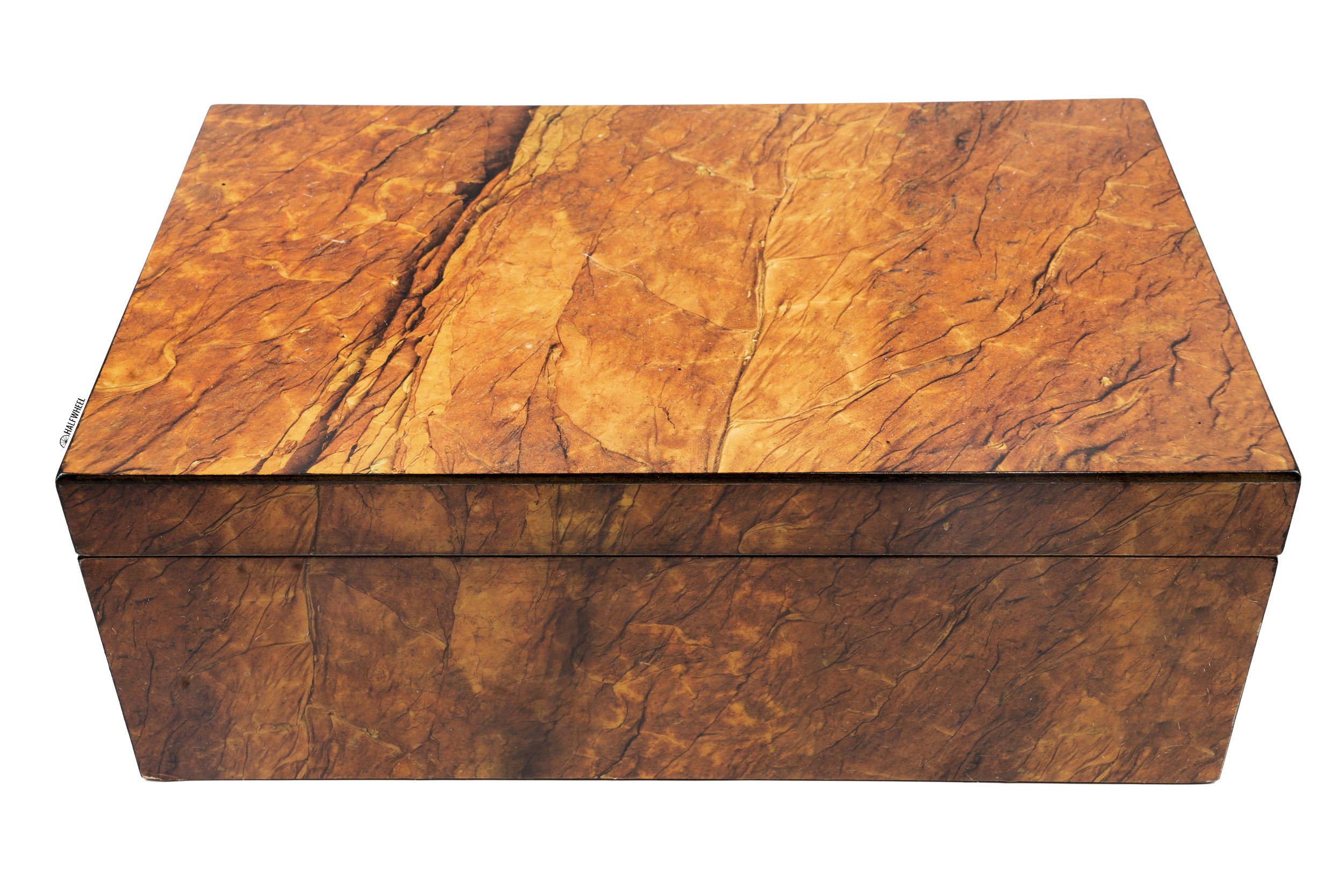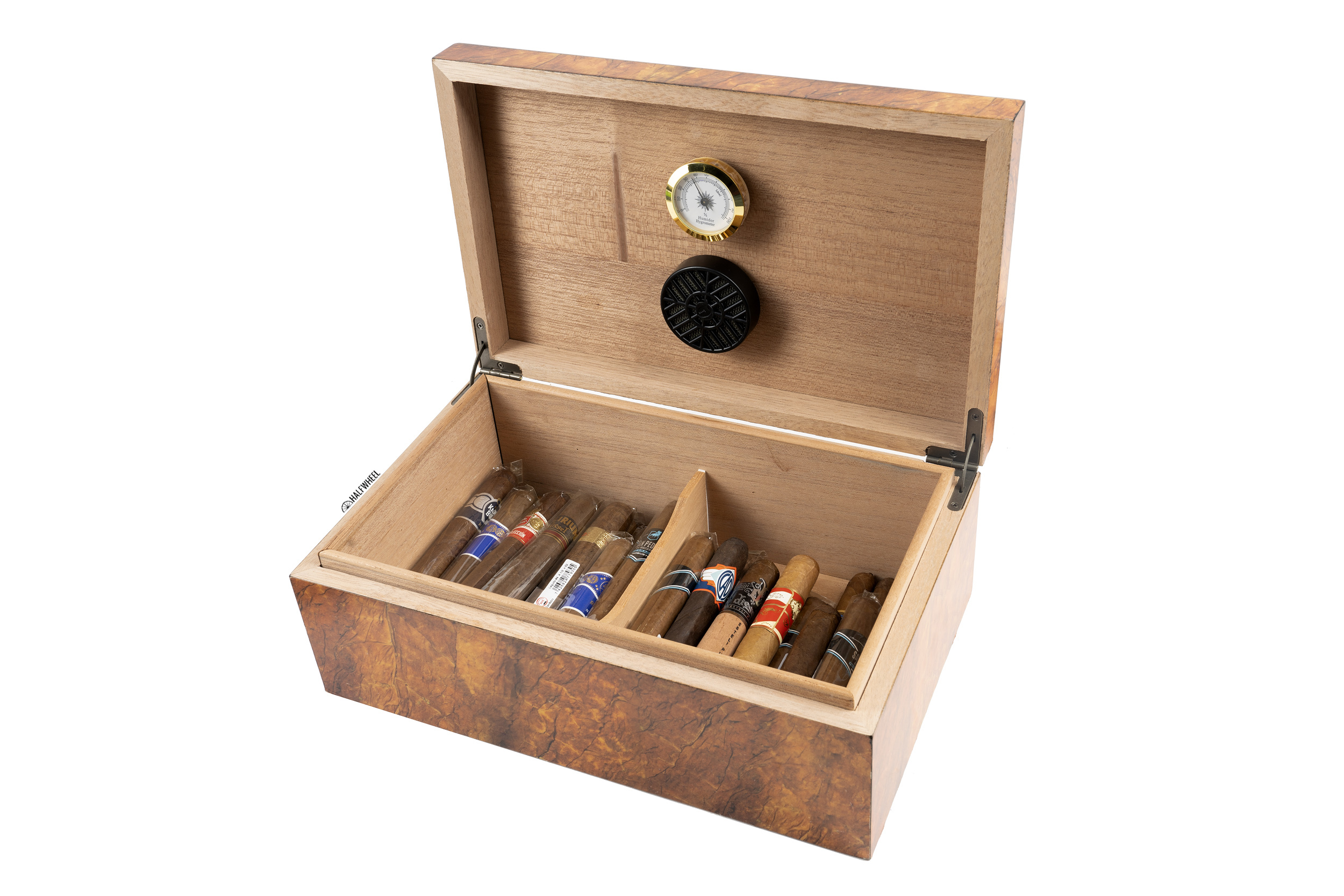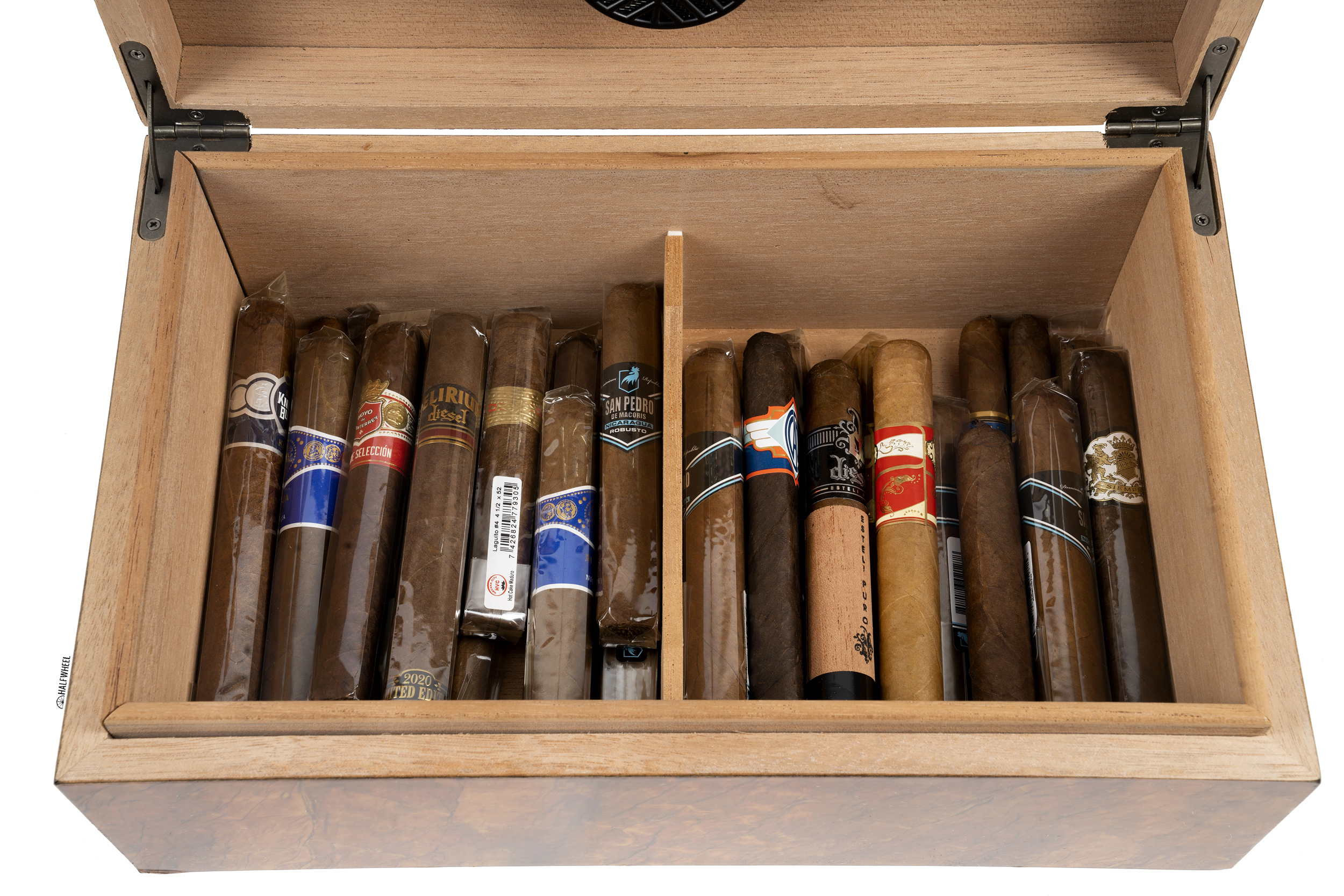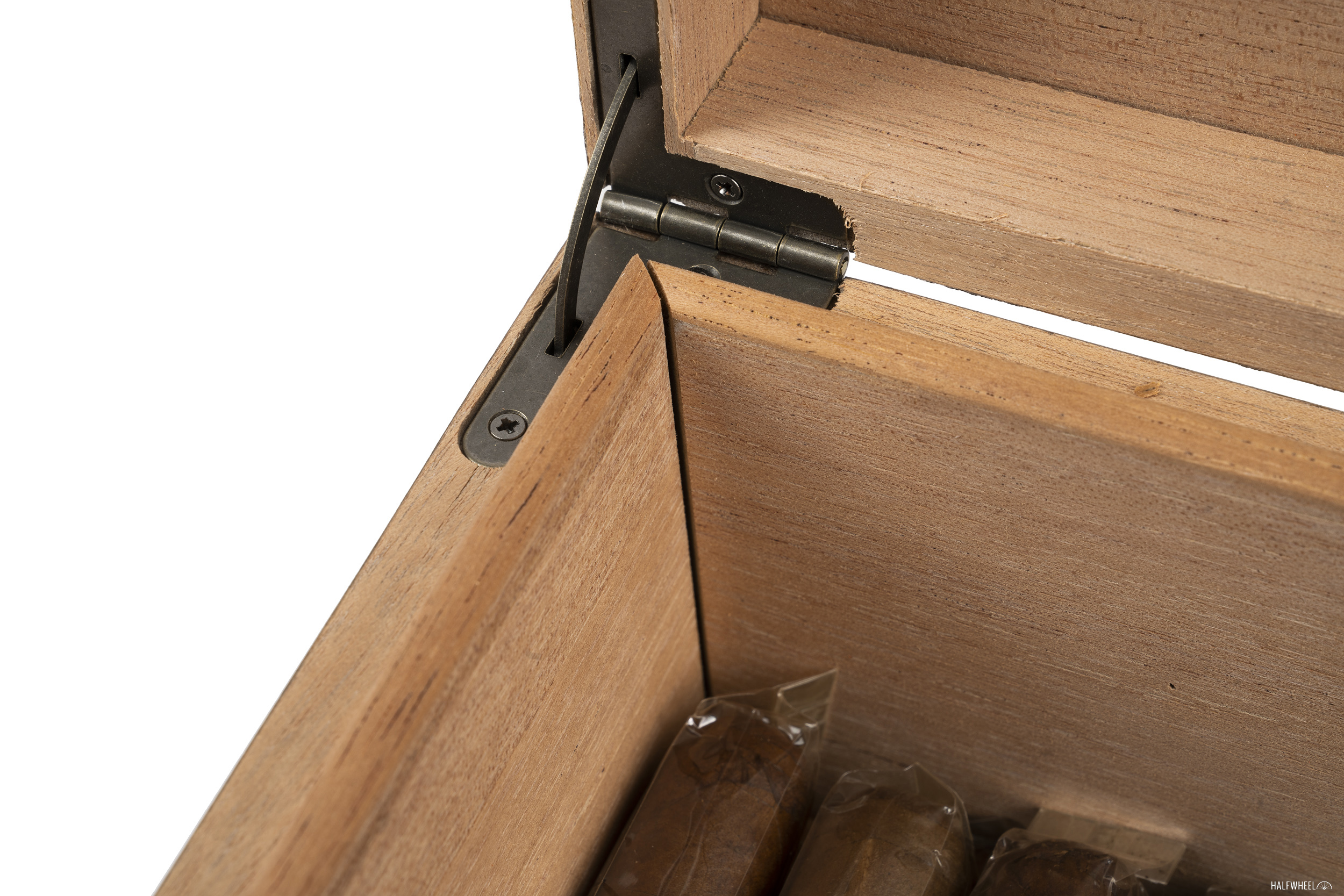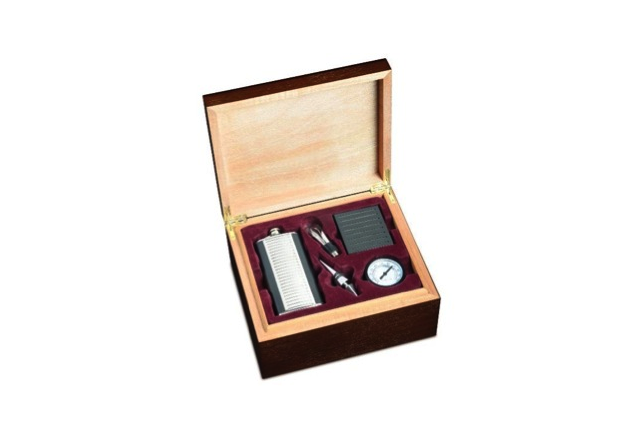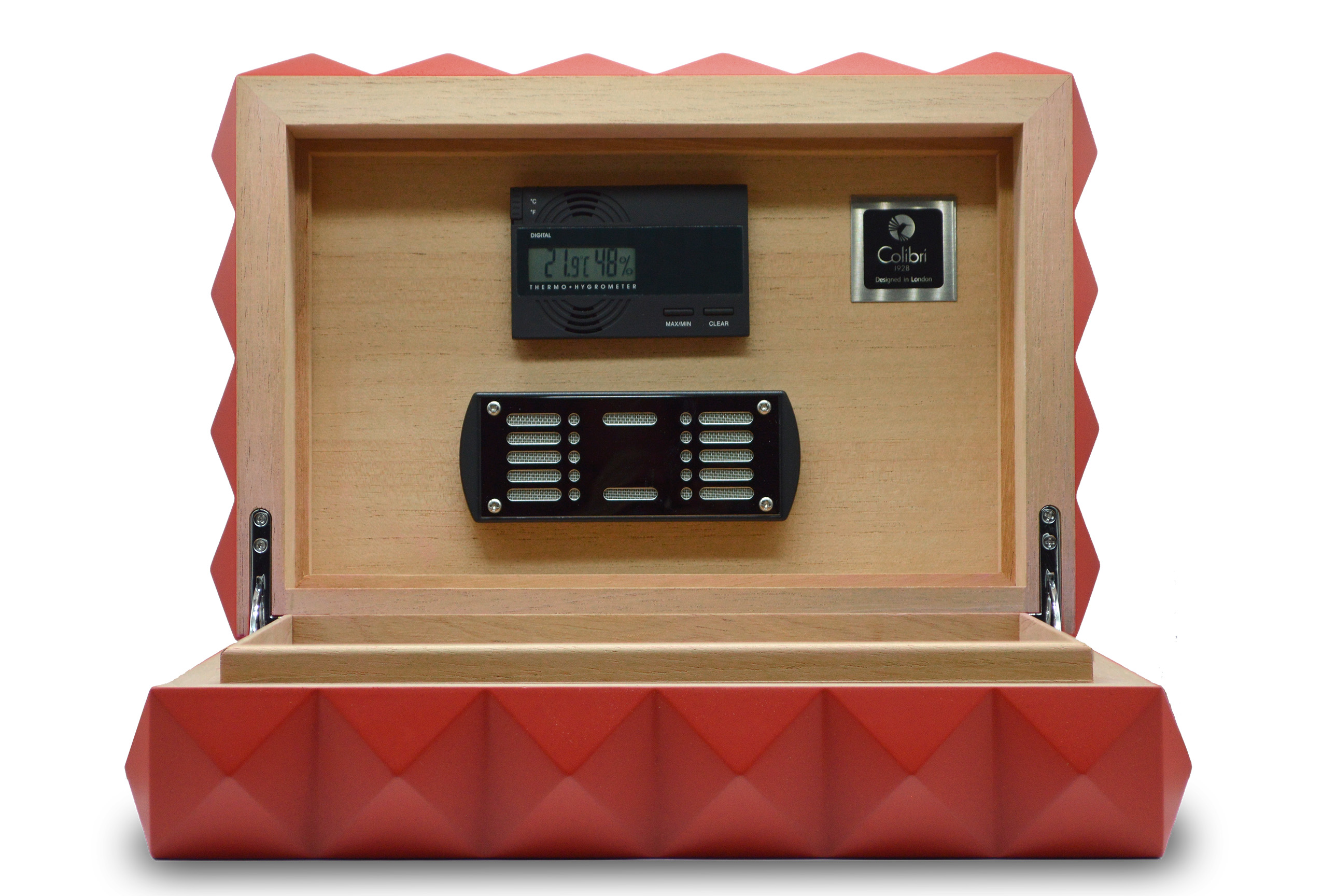I knew when I set out to do this series of humidor reviews that one of the brands that would need to be included was J.C. Newman. It’s not only one of the more popular brands in the U.S. due to J.C. Newman’s wide distribution footprint, but it’s also one of the wider ranges of desktop humidor offerings by pricepoint given that the company sells humidors from around $65 to more than $600.
While I’ve reviewed some of the company’s more luxurious offerings, the nature of this series meant I was going to get one of the more affordable options. For those unaware, this review is part of a series of seven humidor reviews that are all based on humidors that more or less meet the following three qualifications:
- One that looks like a traditional wooden humidor, i.e. no plastic bins or acrylic humidors.
- One that is large enough to hold around 75 robustos, i.e. no travel humidors.
- It must be priced at no more than $175 before tax and shipping.
The idea here is to figure out whether there’s a humidor that meets those qualifications that I would like to recommend. This humidor is the fourth in the series—the literal halfway point—and so far I’ve yet to review a humidor that I would give my proverbial stamp of approval.
WHAT IS IT?
This is the Craftman’s Bench Havana Humidor, which is one of the cheapest wooden humidors that J.C. Newman sells—and boy does it feel like it. The humidor itself is wrapped in images of a tobacco leaf. It’s fairly well done in terms of printing, but this isn’t my favorite aesthetic. Furthermore, if you’ve never seen raw tobacco leaves, this is going to be tough to understand and I would imagine that most would guess this is some sort of obscure camo pattern.
The outside of the humidor measures 13.4 inches x 8.4 x 5. At 4.74 lbs. (2.15kg), it’s tied for the lightest humidor in this test, though it’s also one of the smaller ones based on the exterior dimensions. I think that the cheapness might be more due to the look and feel of the humidor than the weight, but there’s no question that if I had to blindly rank how much we paid for the humidors from most to least, this would be the guess for the latter.
HOW MUCH DOES IT COST?
We paid $79.95 before tax and shipping.
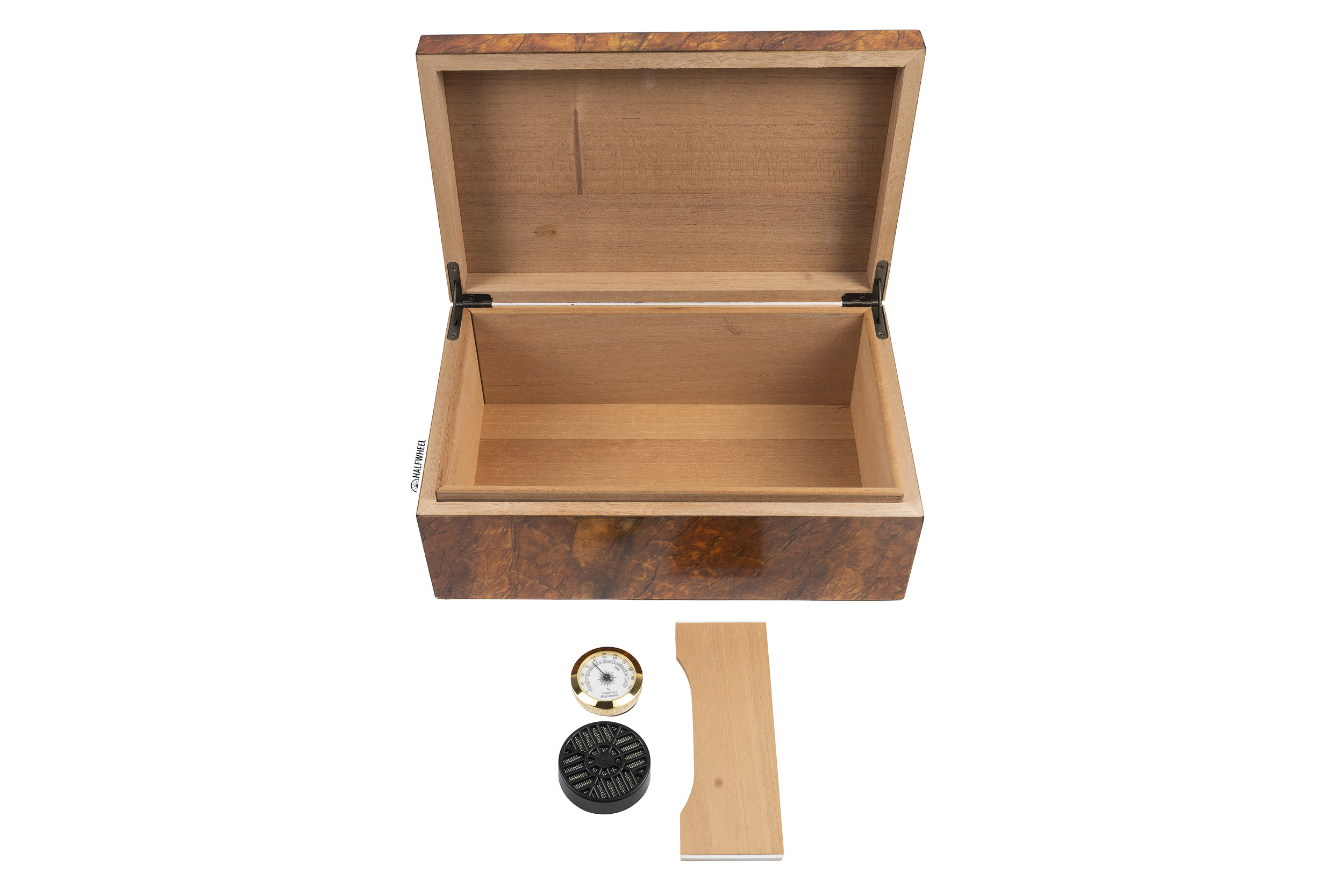
WHAT’S INCLUDED?
- The humidor
- A florists’ foam humidifier with magnetic back
- An analog hygrometer with magnetic back
- A divider
I think it’s also worth pointing out that this humidor has coated accent pieces, meaning it’s not the normal mirror-like brass fittings I normally see.
But the larger point has to be the small florists’ foam humidifier that is included. It measures roughly 4.4 square inches, which is a lot smaller than the 15.6 square inches that most of the rectangular-shaped florists’ foam humidifiers come with. This seems like a pretty obvious instance where this humidifier is not large enough to humidify this size of a humidor, though that’s why I do testing for these reviews.
As for the florists’ foam humidifier, here’s a brief explanation:
Florists’ foam is the traditional humidification method, it’s a green-colored foam that can also be used to keep plants hydrated, hence the name. Humidor manufacturers will place them inside of plastic or metal containers and then recommend you use some sort of combination of distilled water and propylene glycol. The use of propylene glycol—usually recommended in a 50/50 mixture with distilled water—is that it can help to reduce mold and, in theory, absorb excess humidity, specifically excess humidity over 70 percent relative humidity.
Over the years, I haven’t found this to be particularly effective and there seems to be some evidence that more propylene glycol is needed to maintain 70 percent relative humidity at 70 degrees Fahrenheit. For this testing, I used the regularly recommended 50/50 method.
HOW LARGE IS IT INSIDE?
The inside of the humidor measures 12 inches x 7 x 4.125, which works out to 346.5 cubic inches. Per Humidor Discount’s humidor calculator, it should fit 76 robusto cigars if optimized properly. There might be another quarter inch or so of space in terms of the height but I’m not sure exactly how much more space there is because of the way the humidor’s lid closes. That potential extra quarter-inch of height would also assume that you aren’t using any of the included accessories on the lid.
THE TESTING PROCESS
Given that I have seven humidors to compare against one another, I decided to come up with a testing process for all of them. I wanted to test the humidors both as they are sold and also with some of the variables removed so I could test the quality of the boxes themselves.
All humidors had a brand new and freshly calibrated SensorPush device inside for all parts of the test. The SensorPush is a digital device that measures both the temperature and relative humidity, and then sends that data to a smartphone app where it is stored on a minute-by-minute basis. (The SensorPush is not included in any of these humidors.)
The testing process is as follows:
- Seasoning — Two weeks of seasoning with a new sponge soaked in distilled water placed on a plate inside the humidor. The sponge was re-soaked after the first seven days and then removed once the two-week period was complete. Seasoning a humidor is a process to add moisture to the wood. If you don’t do this process, you run the risk that the wood will be dry and will suck the moisture from both the humidifier and the cigar. This can lead to months of frustration, and worse, dried-out cigars.
- Included Humidifier — Four weeks of using the humidor with the included humidifier with no cigars and without opening the lid. This is intended to test the humidor as the manufacturer sends it. Once this was done, I removed the included humidifier and moved on to step three.
- Boveda — Six weeks of using the humidor with three Boveda 60 gram packs (69 percent) with no cigars and without opening the lid. This is intended to test the humidor’s performance without the variability of how well the included humidifier works.
- Dry Cabinet — Two weeks of the humidor with nothing but the SensorPush inside placed inside of an electronic dry cabinet set at 36 percent relative humidity. The dry cabinet allows for me to control the ambient relative humidity, meaning that I can measure humidity loss without having to worry about how much of that is related to the change in the outside air. This is done to test how well the humidor seals. It was done without a humidification device to get a clearer picture of moisture loss.
SEASONING
This humidor started out drier than most—around 44 percent relative humidity—but within 36 hours was already at 75 percent relative humidity, a good sign that the sponge was able to put off plenty of humidity for the size of this humidor.
I used a moisture meter on all the humidors to attempt to measure how much humidity the wood actually absorbed. These measurements seemed like they weren’t the most accurate given the variance in how much pressure I had to apply to get a reading. But for whatever it’s worth, this one was an outlier in how little the data changed between the pre- and post-seasoning measurements: starting at 3.1 and ending at just 3.4.

INCLUDED HUMIDIFIER
As I expected, this small humidifier just isn’t enough. I think it’s safe to say that the humidor probably still needed a lot more seasoning, but I’m not sure even if it was seasoned properly that this humidifier would be able to provide enough moisture in a normal environment over a 28-day period.
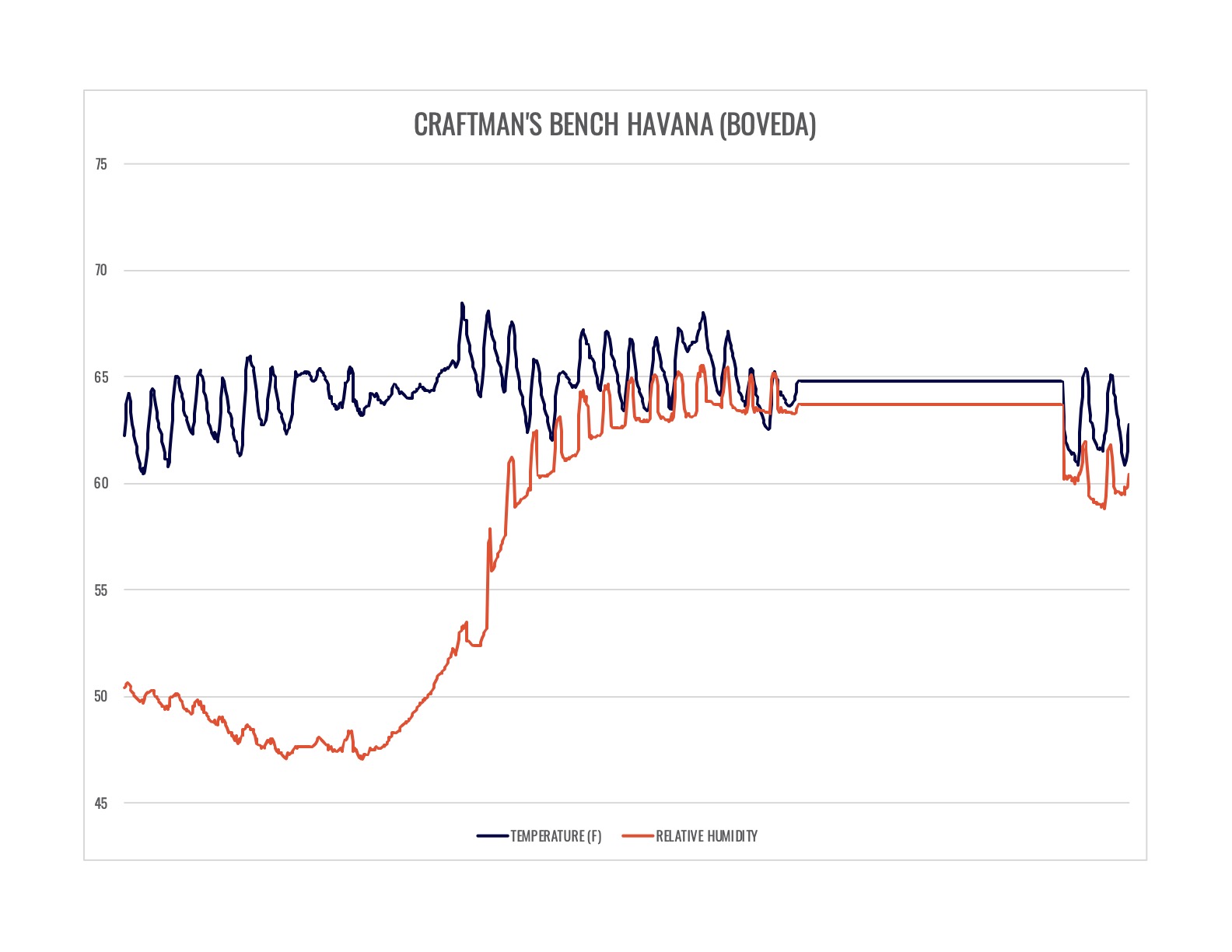
BOVEDA
That horizontal line you see is a two-week period where the SensorPush device apparently decided to not record data. I can’t really figure out what happened, but it’s not just an issue that was related to exporting the data.

As you can see above, even in the app the data didn’t record.
Beyond that, the humidor seemed to suggest that it just needed a few more weeks of seasoning. The Bovedas weighed 135g coming out, just one gram less than the same number of Bovedas did in the Prestige Winchester, a humidor that has about 50 more cubic inches of volume.
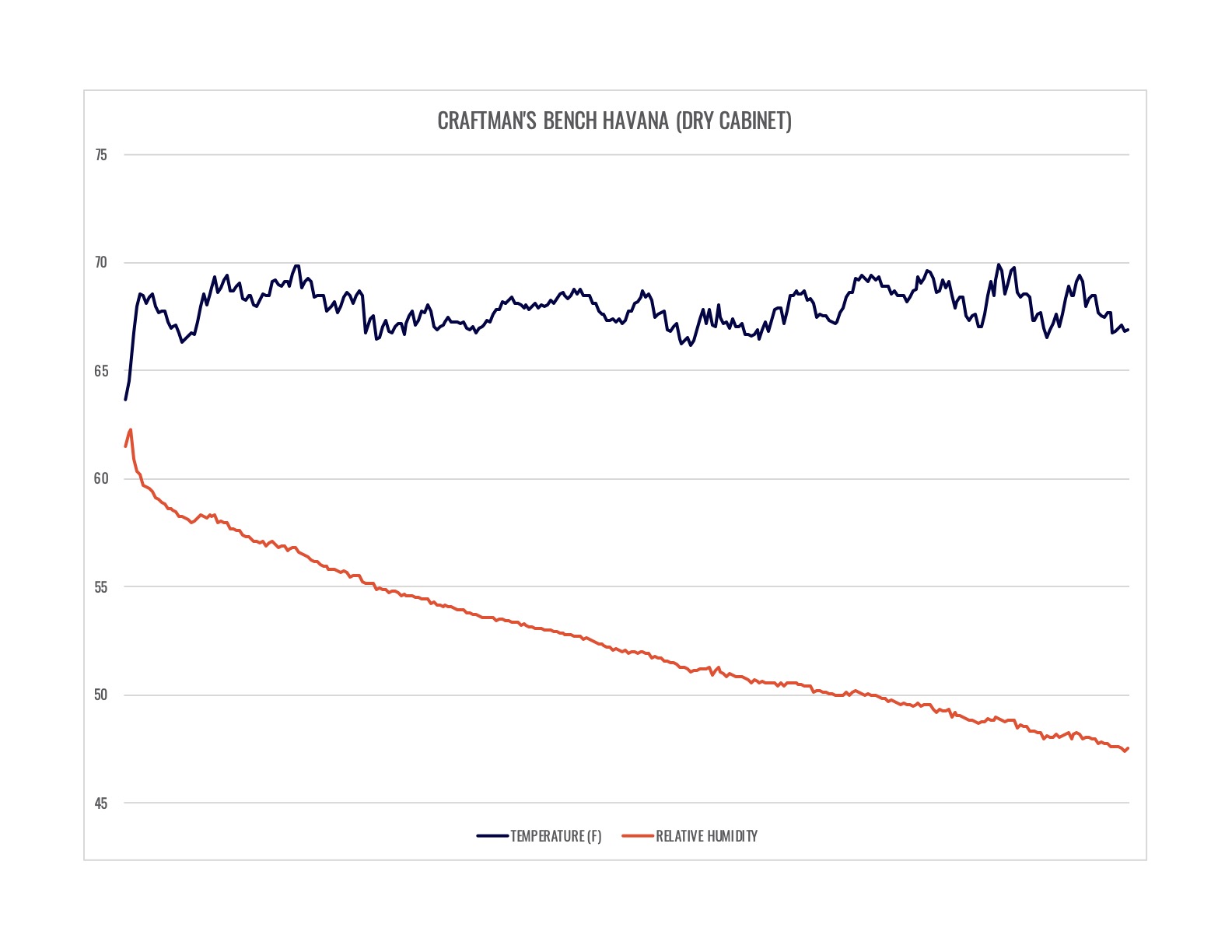
DRY CABINET
The results of this are quite similar to the Savoy Marquis humidor, which lost a bit more humidity in its two weeks in the dry cabinet. The big difference is that the Craftman’s Bench ended up at 47.5 percent relative humidity. That’s not to suggest that if you leave this humidor in a dry room and the humidifier is out of moisture that the humidity will drop this much in two weeks. But, it does show that this humidor has some issues when it comes to how well it’s going to protect your cigars.
THE GOOD
Here’s the deal: this humidor isn’t all bad. But, there’s nothing that stands out as a unique positive here. Yes, the outside of the humidor is aligned properly—unlike the last humidor I reviewed—and there are no obvious signs of gaps in the seal—but those are boxes I expect every humidor to check off. This section is designed for unique attributes that go beyond what I normally expect, and when it comes to those qualities, I can’t think of one for the Craftman’s Bench Havana. 
THE BAD
- The Florists Foam Humidifier Is Too Small — It is of no surprise that the humidifier—which has less than one-third of the surface area of the other humidifiers I’ve seen in this series of reviews so far—is too small. I don’t know if that’s the sole reason why the charts above look the way they do, I really think this humidor didn’t absorb moisture as quickly as some of the other humidors, but it’s not going to help. For reasons explained above I’d recommend not using a florists’ foam humidifier, but if you are going to stick with it you need to add another humidifier to this box in my opinion.
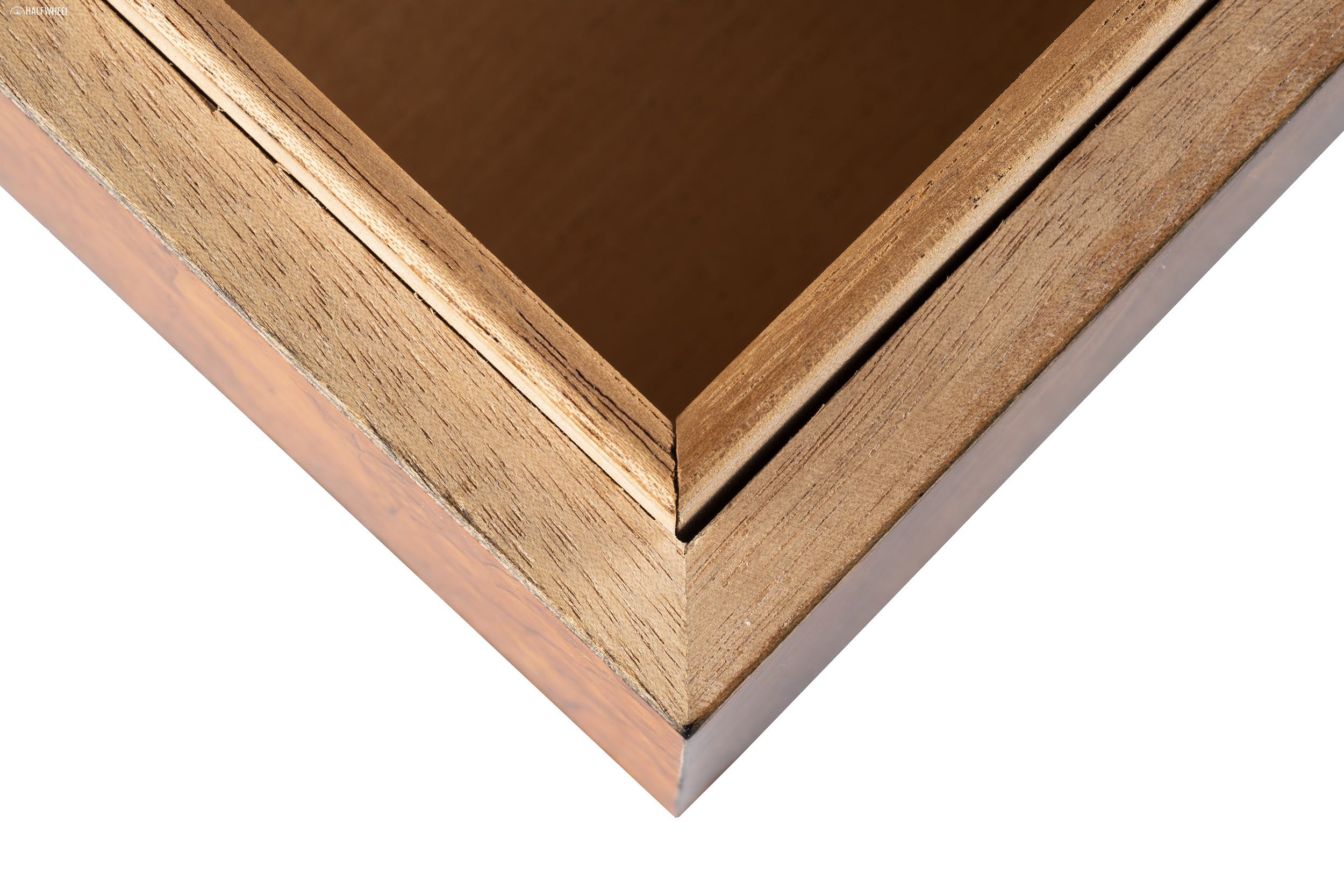
- The Interior Wood Pieces Have Visible Gaps & Can Be Wiggled —I think this is mainly due to the left side piece just not being where it should be. The end result is that I can easily wiggle the top and bottom wood pieces and the left side piece. I’m not sure how much this affects humidor performance, but it’s not a great look.
- The Floor of the Humidor Moves When I Press On It — Yes, you read that right. If I open the humidor and then grab the right corner and push up on the floor from the outside, I can see and hear the inside of the floor moving slightly. This only seems to affect the right side of the humidor. I can also—as you can see in the video—see the floor move from the bottom side. I suspect some of the glue or whatever is holding the floor into place came undone at some point. The left side of the humidor’s floor is firmly in place and cannot be moved.
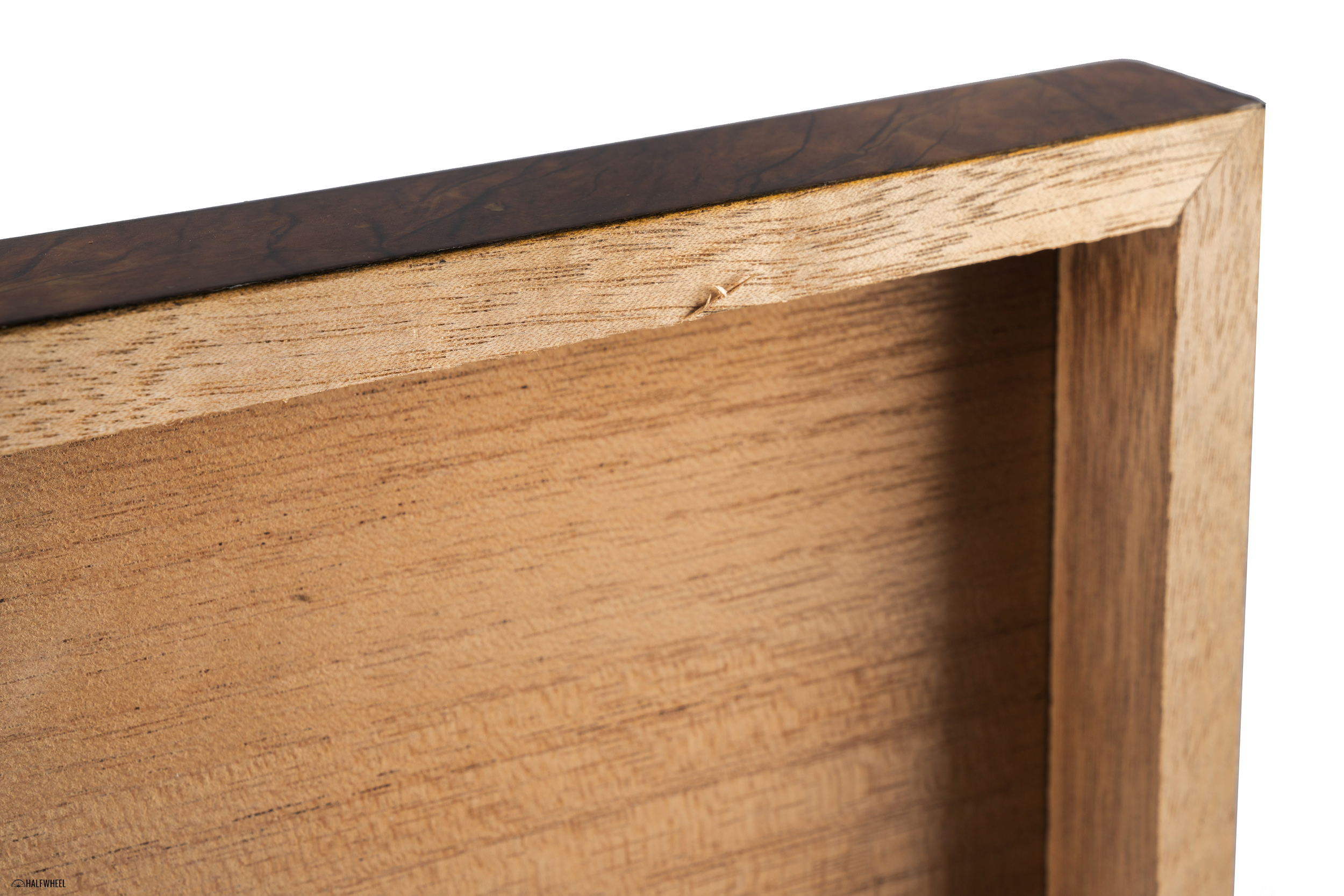
- The Finishing of the Wood Isn’t Great — I’m not sure what the technical term is but some parts of the inside of the wood weren’t cut in a smooth manner, or perhaps weren’t sanded down. The end result is that a couple of sides of the lid have wood that is visibly jagged. This may not be that noticeable except for the fact that some other parts of the humidor’s wood pieces are nice and clean.
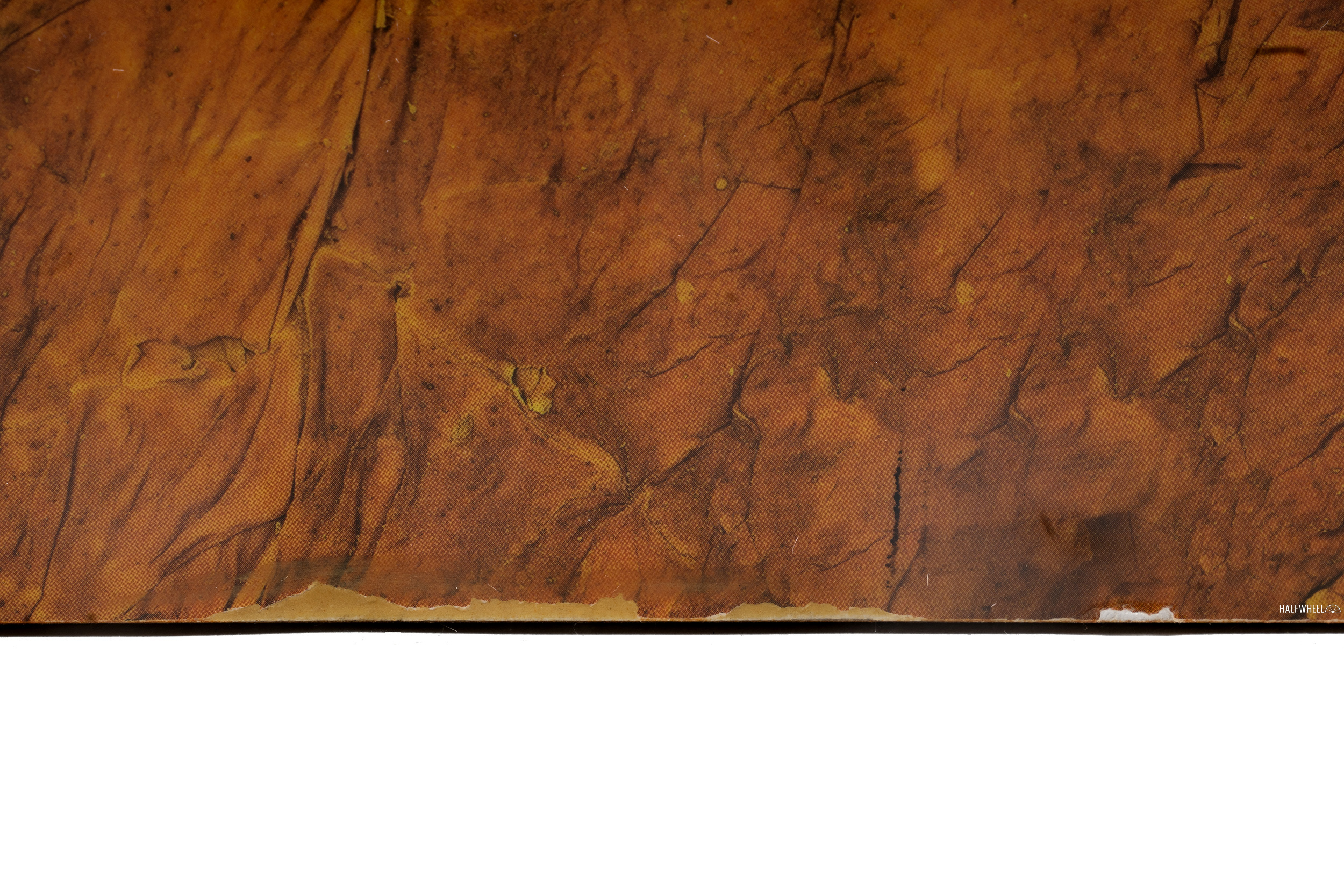
- There are Visible Imperfections on the Exterior Edges — While it blends into the exterior design a lot better than it would on a traditional humidor if I look at the edges of the humidor I can see areas where the printing design has faded, chipped away, or been scratched. These were present from the moment we took the humidor out of the box.
- There’s A Weird Mark On the Inside of the Lid — If you look at any of the pictures of the lid you can see a vertical line that runs in the lid slightly left of center. I’m not really sure what that’s about.

- It Passed Quality Control? — This actually has a sticker on the bottom saying that it passed quality control. I suppose the issues with the interior wood piece getting unaligned and the bottom becoming slightly detached could have happened after it left the factory. But given the jagged wood, weird mark on the lid, damage to the exterior printing—I sort of wonder what actually goes into quality control as that seems like something that could be spotted in less than a minute if you were trying to find issues with the humidor. For those wondering, we bought it from a tobacco retailer that is an authorized J.C. Newman account.
THE COMPETITION
- Savoy Marquis ($111.95) — While I certainly don’t think this applies to every Savoy Marquis or Savoy humidors in general, the one that we purchased has a visible gap in between the top part and the lid. As such, I cannot recommend this humidor.
- Prestige Princeton ($134.55) — This was the aforementioned “safe” choice from Prestige and I think it’s a pretty sensible humidor with one major flaw. The single included humidifier was unable to provide enough humidity for this unit and as such the testing results were awful. I cannot recommend this humidor.
- Prestige Winchester ($149.95) — The Prestige Winchester’s unique wide design made it one of the more interesting humidors in this series. Unfortunately, the unit we purchased was as poorly constructed as any humidor I’ve ever reviewed. Just stay away.
- Quality Importers Old World ($94.99) — This is part of the sub-$175 humidor test. A full review is coming and I will update this review once that review has been published.
- The Deauville Tobacco Leaf ($99.99) — See above.
- Boveda Large Acrylic Humidor ($180) — This humidor is just over the $175 price point but would otherwise be the recommended option. It’s a large, see-through plastic box with a removable tray that allows you to show off your cigars. More importantly, it’s plastic, which means you don’t need to worry about seasoning it and really don’t need to worry about the seal. It just works. The issue with the Boveda is that it just doesn’t look like what most people think of as a humidor.
- Colibri Heritage Humidor ($495) — If you want a wooden humidor that is going to last, I think you are going to want to spend closer to $400. The Heritage Humidor can regularly be found at that price point and it’s just so much better in just about every way. It feels solid, it avoids the major manufacturing flaws and it has a much more modern look, albeit one that isn’t for everyone.
SHOULD YOU BUY IT?
No. Please don’t.
There are some great J.C. Newman humidors. We use a couple of the high-end Diamond Crown ones at the office and have had zero issues with how they function. If I put enough Bovedas in this—or maybe just one more florists’ foam humidifier—I could probably get the Craftman’s Bench Havana humidor to work, but that could be said about any humidor. I’d recommend either saving your money and buying an airtight container or saving your money and then buying a higher-end humidor like the ones J.C. Newman sells under the Diamond Crown brand.
The humidor for this review was purchased by halfwheel. J.C. Newman advertises on halfwheel.

